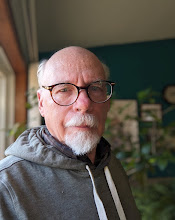The Sherlock Holmes of my readers are likely going to discover an ongoing theme with the books I am reading. There is an explanation for this, laziness and a lack of inspiration. But hey, I'm learning something, and this time a part of my current historical interest that I never even considered.
My reviewer criteria. I like light, entertaining novels. I like smaller scale stories rather than epics. I like character focused novels featuring pleasant characters, with a minimum number of unpleasant ones. I greatly value clever and witty writing. I like first person, or close third person narratives. I dislike a lot of "head jumping" between POVs and flashbacks. I want a story, not a puzzle. While I am not opposed to violence, I dislike gore for the sake of gore. I find long and elaborate fight, action, and battle sequences tedious. Plot holes and things that happen for the convenience of the author annoy me. And I fear I'm a born critic in that I don't mind pointing out what I don't like in a story. However, I lay no claim to be the final arbitrator of style and taste, you need to decide for yourself what you like or dislike in a book.
Your opinions are always welcome. Comment below.
A World on Fire by Amanda Foreman B
This is a long book. The paper edition runs 1040 pages. It boasts 5 pages just listing the illustrations, 4 plus pages of listing the photographs, a page plus listing the included maps, and 18 plus pages listing the "Dramatis Personae" i.e. the cast of historical characters that she follows over the course of her history of the English involvement in the American Civil War.
She writes that her original intention was to write a history of the English volunteers in the American Civil War, but she found their involvement part of a very complex web of interactions between England, The United States and the Confederacy. She says that recalling, "... Trevor Nunn's 1980 Nicholas Nickleby, and extraordinary "theater-in-the-round" production that brought together a vast panoply of characters through a combination of three-dimensional staging, shifting scenes, and running narratives that created an all-enveloping experience for the audience. This memory became my guide and inspiration..." In short, she decided to tell the story of England and its peoples involvement on all levels in the Civil War through the letters. memoirs, and previous histories to paint this complicated picture.
She certainly succeeded in creating a complete and complicated account of this relationship, though if you're someone who must have a clear idea of who's who in a story, you'll have your work cut out for you reading this book, for, as I said, it has a cast of over 200 characters, some mentioned, some followed in detail throughout the history.
As I said it is a history of American/Confederate/English interactions, both diplomatic and personal during the Civil War. I learned a great deal about the Civil War from reading this book that I never knew that I didn't know. Things like how close the United States and England came to war during that period over various disputes, how popular the South was in England, seen as underdogs fight for freedom - as long as they turned a blind eye to slavery - and how much effort the South put into trying to get it recognized as a country. Her choice to include the personal accounts of so many people may have created a sense of how complicated all the issues were, but it makes it a challenge to keep track of more than just a few of the major characters, and makes for a long book.
A must read for serious scholars of that war, and an interesting read for history buff of England and the Civil war. But it is a long book. Still now I know what I didn't know that I didn't know.




No comments:
Post a Comment